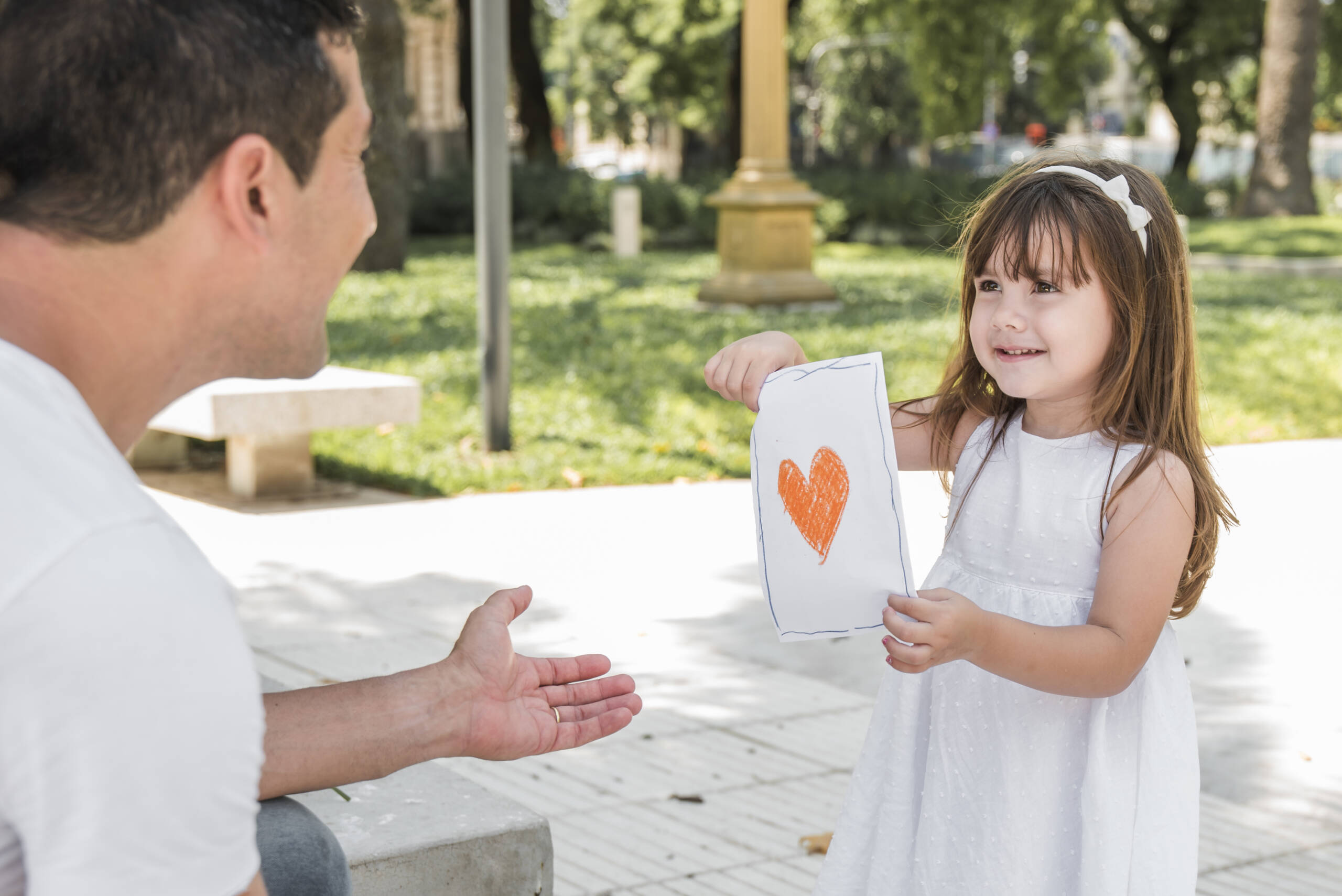Many parents struggle to find the balance between setting firm boundaries and maintaining a loving, trusting relationship with their children.
The goal of discipline should not be punishment but guidance. Helping children learn self-control, responsibility, and respect for others. When done with love and consistency, discipline fosters a child’s emotional and social development while strengthening the parent-child bond.
Parenting isn’t easy, and discipline is one of the toughest parts. Every parent wants to raise kind, responsible children, but finding the right balance between setting rules and maintaining a loving connection can feel overwhelming. Discipline isn’t about punishment, it’s about guidance.
When we approach discipline with patience and consistency, we help our children learn self-control, take responsibility for their actions, and respect others. More importantly, we show them that boundaries come from a place of love.
Why Boundaries Matter
Children thrive when they know what to expect. Boundaries give them a sense of security, helping them feel safe, confident, and capable of making good choices. Without clear limits, they can feel lost or overwhelmed, unsure of where they stand.
When set with love and consistency, healthy boundaries:
✨ Teach children to take responsibility for their actions.
✨ Help them understand that choices have consequences.
✨ Encourage self-discipline and emotional regulation.
✨ Build a strong foundation of trust between parent and child.
Boundaries aren’t about control, they’re about guiding children with love, so they can grow into confident and responsible individuals.
Discipline vs. Punishment: What’s the Difference?
Imagine your child spills a glass of juice on the floor. If you react with punishment, yelling or sending them to their room. They may feel ashamed or afraid but not necessarily learn anything. Next time, they might just try to hide their mistake.
Now, if you approach it with positive discipline, you guide them through the process: “Accidents happen, but let’s clean it up together. Next time, try holding the glass with both hands.” This teaches responsibility without fear.
Punishment is about control—it focuses on making a child suffer for their mistakes, often leading to resentment or defiance.
Discipline is about teaching—it helps children learn from their actions and make better choices in the future.
When discipline is handled with love and consistency, children don’t just obey out of fear; they internalize values like responsibility, kindness, and self-control. That’s what truly helps them grow. Its one of the most effective parenting techniques.
Effective Discipline Techniques
1. Set Clear and Consistent Expectations
Children feel secure when they have clear expectations. Imagine telling your child, “Be good.” What does that really mean? To them, it could mean sitting quietly, while to you, it might mean sharing toys or cleaning up after themselves. Instead, try something more specific: “Use kind words when talking to others” or “Put your toys away when you’re done playing.”
Consistency is just as important. If bedtime is 8 PM one night but 10 PM the next, kids may start testing limits to see what they can get away with. When rules are clear and predictable, children are less likely to push boundaries and more likely to respect them. It makes setting boundaries with kids easy.
2. Use Positive Reinforcement
Children thrive on encouragement. Imagine your child patiently waiting for their turn on the swing instead of pushing ahead. Instead of only noticing misbehavior, take a moment to acknowledge their effort: “I love how patiently you waited your turn!”
Positive reinforcement doesn’t have to mean big rewards, simple words of appreciation, a high-five, or a warm hug can be just as powerful. When kids feel seen and valued for their good choices, they’re more likely to repeat them. Over time, they don’t just behave well for praise; they learn the joy of kindness, patience, and responsibility on their own.
3. Natural and Logical Consequences
Instead of using punishments that feel unfair or unrelated, let children learn from the natural flow of their actions.
Natural consequences happen on their own. If your child refuses to wear a jacket on a chilly day, they’ll feel cold. That discomfort teaches them why a jacket is important, without a lecture.
Logical consequences are directly connected to behavior. If they don’t put away their toys, they won’t have them to play with the next day. This isn’t about punishment, it’s about showing them that choices have consequences.
When children experience the outcomes of their decisions in a safe and supportive environment, they learn responsibility on their own, without the need for threats or power struggles.
4. Try Time-Ins Instead of Time-Outs
When children act out, they’re often overwhelmed by big emotions they don’t yet know how to handle. Traditional time-outs, where a child is sent away to sit alone can sometimes feel like rejection, making them more upset rather than helping them learn.
Instead, try a time-in. Sit with your child in a quiet space, help them calm down, and talk through what happened. For example, if they hit their sibling in frustration, you might say, “I see you’re upset. Let’s take a deep breath together. Can you tell me what you were feeling?”
Research in child psychology shows that co-regulation, where a caregiver helps a child manage their emotions builds emotional intelligence and strengthens the parent-child bond. Studies suggest that children who experience effective discipline (rather than isolation-based punishment) develop better self-control and problem-solving skills over time.
By choosing connection over separation, you’re not just correcting behavior you are teaching your child how to navigate their emotions in a healthy way.
5. Encourage Open Communication
Children are more likely to listen when they feel heard. Instead of shutting down their questions with “Because I said so,” try explaining the why behind rules.
For example, instead of saying “Go to bed now,” you could say, “Your body needs rest so you can have energy for tomorrow. Let’s read a story together before bed.”
Also, give them space to express their thoughts and feelings. If your child says, “That’s not fair!” instead of dismissing them, ask, “What feels unfair to you?” Listening without immediately correcting helps them feel respected and teaches them how to work through disagreements in a healthy way.
When children know their voices matter, they are more likely to cooperate, not because they have to, but because they trust that their feelings and opinions are valued.
6. Redirect Instead of Just Saying “No”
Constantly hearing “No, don’t do that!” can be frustrating for both children and parents.
Instead of focusing on what they can’t do, try showing them what they can do instead.
For example, if your toddler starts hitting in frustration, instead of just saying “Stop hitting!” you could gently guide them and say, “Hands are for high-fives and hugs, not for hitting. If you’re upset, let’s use our words instead.”
Redirection keeps the conversation positive and helps children learn appropriate behaviors without feeling scolded. It also encourages problem-solving, making it easier for them to understand and follow expectations.
7. Be Patient and Stay Calm
Kids will push boundaries, it’s how they learn. Some days, they’ll test your patience in ways you never imagined. But how you respond in those moments shapes their understanding of emotions and self-control.
Instead of reacting with frustration, take a deep breath. If your child refuses to listen or throws a tantrum, remind yourself: They’re still learning. I’m here to guide them. Speaking calmly doesn’t mean ignoring misbehavior, but it does mean showing them how to handle big emotions in a healthy way.
And if you lose your temper? That’s okay too. No parent is perfect. A straightforward “I’m sorry for raising my voice. I was feeling frustrated, but I should have handled it differently” teaches them that mistakes are part of life and that taking responsibility is just as important as setting rules.
8. Adapt Discipline to Your Child’s Age
Just like you wouldn’t teach a toddler and a teenager in the same way, positive discipline should grow with your child.
🔹Toddlers (1-3 years): At this stage, they’re still figuring out boundaries. Keep instructions simple: “We don’t throw toys. Let’s roll the ball instead.” Redirection works best because they’re not yet able to understand complex reasoning.
🔹Preschoolers (3-5 years): They’re starting to grasp cause and effect. If they refuse to put away their crayons, you might say, “If we don’t take care of our crayons, they might break, and then we won’t be able to color.” Giving them limited choices—“Do you want to clean up now or after one more story?” It gives them a sense of control while still respecting the rules.
🔹School-age children (6-12 years): This is the stage where they can start learning problem-solving and accountability. If they forget their homework, instead of rushing to fix it, you might say, “What do you think we can do to make sure this doesn’t happen again?” Logical consequences like losing screen time for not finishing chores can also help reinforce responsibility.
🔹Teenagers: They crave independence but still need guidance. Instead of strict rules with no explanation, have open discussions: “I trust you to make good choices, but staying out too late without telling me worries me. How can we find a balance?” Natural consequences, like facing the disappointment of a missed deadline, can be more effective than punishments.
Each stage comes with its own challenges, but when discipline is tailored to their age and understanding, children learn why rules matter not just that they have to follow them.
The Power of Love and Connection
No discipline strategy can replace the foundation of a strong, loving relationship. Children listen, learn, and grow best when they feel safe and understood. They don’t just need rules, they need to know that even when they make mistakes, they are still loved.
Discipline isn’t about being strict or harsh, it’s about shaping character with love. When you set boundaries with warmth and consistency, you create a home where your child feels safe to explore, learn, and grow. Over time, these lessons will help them become confident, responsible, and kind individuals who understand the importance of respect, self-discipline, and making thoughtful choices.
At the end of the day, discipline isn’t just about correcting behaviour, it’s about raising good humans.



